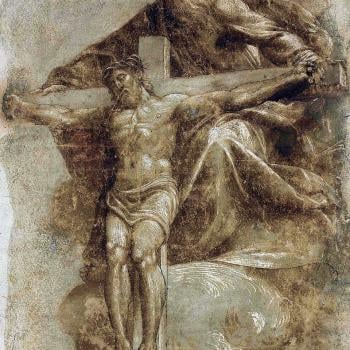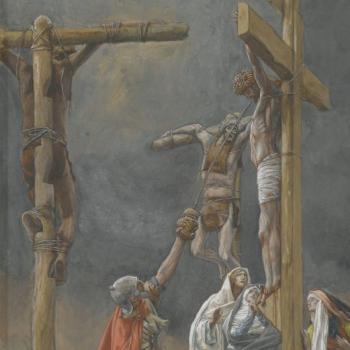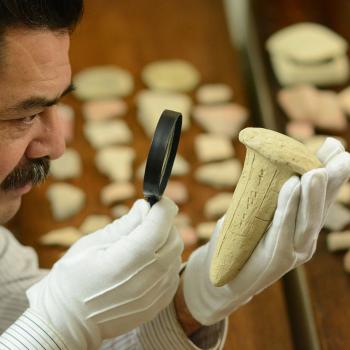
By Paul Louis Metzger and John W. Morehead On the evening of Sunday, June 2nd, members of The Church of Jesus Christ of Latter-day Saints and members of various Evangelical Protestant churches from the greater Portland area came to the Tualatin Stake Center to listen to a conversation between representatives of their respective faith traditions (Hereafter, for shorthand purposes, we will often use Latter-day Saints or LDS when referring to our friends’ faith tradition; for an article we wrote about their determination no longer to use “Mormon” and “LDS” in official communications, refer here). J. Spencer Fluhman of Brigham Young University, and Edgar L. Stone, a local Mormon interfaith activist, represented the Latter-day Saints and Paul Louis Metzger and John W. Morehead represented Evangelical Christians. The title of the event illustrated the intent behind the conversation. It was called “Fence Posts and Front Porches: When Joseph Smith and Billy Graham Live Next Door.” This was the fourth dialogue event, and the metaphor of fence posts and front porches communicates the idea of the significance of doctrinal distinctives and boundaries, coupled with front porches where neighbors have conversations and build relationships.
The subject for discussion on June 2nd was the nature of humanity. An article at the website for The Church of Jesus Christ of Latter-day Saints does an excellent job at presenting the LDS view. In “Becoming Like God,” we learn that human beings are seen as the literal children of God:
Latter-day Saints see all people as children of God in a full and complete sense; they consider every person divine in origin, nature, and potential. Each has an eternal core and is ‘a beloved spirit son or daughter of heavenly parents.’ Each possesses seeds of divinity and must choose whether to live in harmony or tension with that divinity. Through the Atonement of Jesus Christ, all people may ‘progress toward perfection and ultimately realize their divine destiny.’ Just as a child can develop the attributes of his or her parents over time, the divine nature that humans inherit can be developed to become like their Heavenly Father’s.
This article also includes something we heard the other evening from our LDS conversation partners. It mentions the significance of this narrative for how Latter-day Saints feel about their relationship with God as well as a spiritual goal that they can strive for in the future.
We had an opportunity to share the traditional Christian view by way of contrast. In one sense, human beings can be understood as being children of God by way of creation. God brings each individual into being as their Creator. But more importantly, the Bible talks about the possibility of human beings being adopted into the family of God through faith in Jesus Christ. In Ephesians 1, we read:
3 Praise be to the God and Father of our Lord Jesus Christ, who has blessed us in the heavenly realms with every spiritual blessing in Christ.4 For he chose us in him before the creation of the world to be holy and blameless in his sight. In love 5 he predestined us for adoption to sonship through Jesus Christ, in accordance with his pleasure and will— 6 to the praise of his glorious grace, which he has freely given us in the One he loves.
This same idea is taught in Romans 8:
14 For those who are led by the Spirit of God are the children of God.15 The Spirit you received does not make you slaves, so that you live in fear again; rather, the Spirit you received brought about your adoption to sonship. And by him we cry, “Abba, Father.” 16 The Spirit himself testifies with our spirit that we are God’s children. 17 Now if we are children, then we are heirs—heirs of God and co-heirs with Christ, if indeed we share in his sufferings in order that we may also share in his glory.
One of the major distinctives of the traditional Christian view, which is held not only by Evangelical Protestants, but also by Roman Catholics and the Eastern Orthodox, is the “ontological gap,” or the unbridgeable gap of being between the Creator and the created. While we human beings will be glorified and participate in his glory in the resurrection at the end of the ages, we will not possess the divine nature in its fullness. Peter says that we will “participate in the divine nature” (2 Peter 1:4), but historic orthodox Christianity, including Eastern Orthodoxy (often cited by Latter-day Saints as teaching something similar to their deification), has always understood glorification which emphasizes union with Christ, not the possession of Christ’s divine essence (as with LDS). (For more on this see Carey Newman, Paul’s Glory-Christology: Tradition and Rhetoric [Brill, 1992]. In this volume Newman discusses the Apostle Paul’s eschatological hope that believers will share in Christ’s mediated glory [Romans 8:29], a process Newman refers to as “Christosis.” On the subject of union with Christ, it is worth noting scholarship that brings Luther into conversation with Orthodoxy. See for example the fascinating volume edited by Carl E. Braaten and Robert W. Jenson titled Union with Christ: The New Finnish Interpretation of Luther. See also the following exchange under the heading “Luther and the Finnish School,” in Westminster Theological Journal. The exchange includes articles by Mark A. Seifrid, Carl R. Trueman and Paul Louis Metzger, with a response by Robert W. Jenson).
It’s also important to understand why Evangelicals find their view so compelling. We can take great joy from knowing that God so loved us as to seek us out in our sin, and to offer us the gift of pardon and salvation through Jesus Christ. By accepting God’s gracious gift, we are then made vital members of God’s family.
While we appreciate how important the idea of eternal progression and exaltation are to Latter-day Saints, from the traditional Christian perspective, we are concerned that this view denigrates God. By removing the distinction of being between creature and Creator, we lose the grandeur of God and come close to idolatry. Related to this concern is our fear that their teaching undermines the uniqueness of Jesus Christ as Savior and Lord. Jesus is quantitatively greater than we are presently, but not qualitatively different. As much as our Latter-day Saint friends seek to emphasize that Jesus alone saves us, we firmly maintain that their conviction that we possess the divine nature with him takes away from the profound sense that we are wholly dependent on Jesus for salvation. Of course, our LDS friends disagree and seek from within their tradition to address these concerns while posing challenges of their own to us (You can find below the video clip sequence to the gathering the other evening. We encourage you to watch the whole exchange in pursuit of greater understanding of the respective traditions. Two of the other four forums are also available as video recordings. Here are the links to the second and third forums; the first forum was not recorded).
The decision was made to play two songs at the event the other evening. They reflect the profound differences between the two traditions—the LDS hymn, “I Am a Child of God,” and the Evangelical Christian song, “Children of God,” by Third Day (you can watch/listen to the songs here at the embedded links). So often, hymns and songs reflect theological traditions. We allowed these songs to serve as illustrations for the views that both sides hold dear.
The effort was made the other night to make clear our positions and why they matter so much to us, without demeaning our LDS friends or their positions. It was certainly mutual, as they sought to make clear their positions and why they hold them close, again without demeaning us and our positions. All too often, our communities have spoken past each other, not listened well, or tried to understand why our respective claims matter greatly. As people of good will, those gathered for the event sought to understand, not simply be understood. Our hope is that such respectful understanding and open dialogue can continue to grow between us as friends and neighbors.
As stated above, the event title included the words “Fence Posts” and “Front Porches.” This post has emphasized the need to preserve sound, sturdy fence posts, that is, doctrinal distinctives. After all, good fences make for good neighbors. But there is more. In a follow-up blog post, we will discuss the importance of having good neighborly conversations with one another on “front porches” in our community. After all, it is not enough to put up fences between ourselves and our neighbors. Without front porch conversations involving various aspects of every day life, the fences turn into brick walls.












